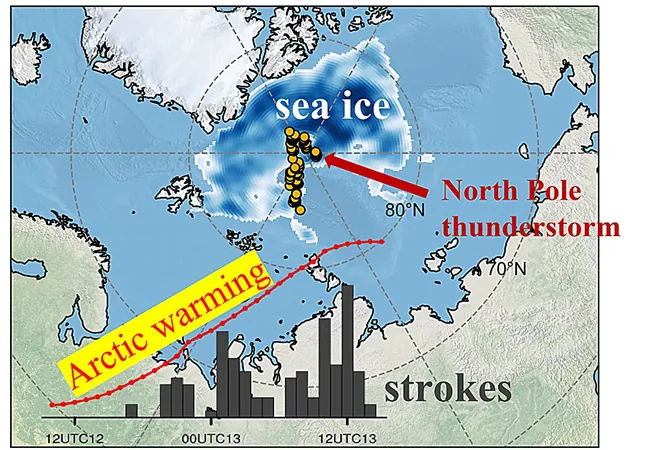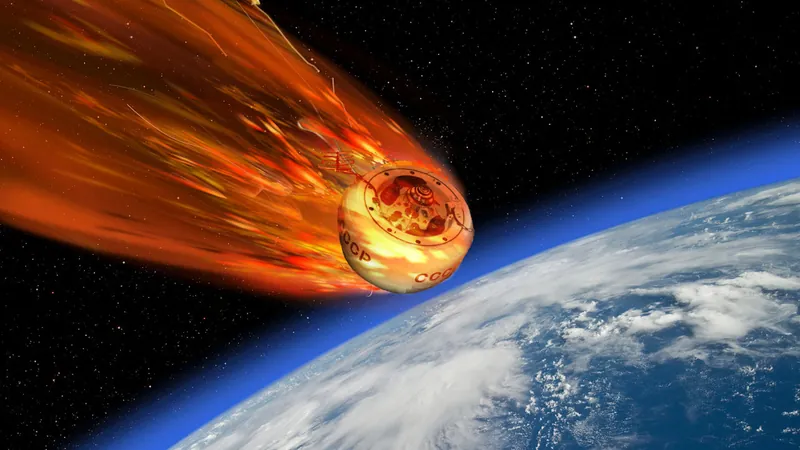
Unprecedented Thunderstorm Near the North Pole Raises Alarming Climate Questions
2025-04-16
Author: Liam
A Rare Arctic Thunderstorm Shakes Scientific Understanding
In an astonishing turn of events, the typically calm and frigid Arctic experienced a rare thunderstorm in August 2019 that has left scientists reevaluating their understanding of weather patterns in polar regions. This unprecedented storm marks a new chapter in climate research, revealing unexpected relationships between warming temperatures and rare meteorological phenomena.
A Storm Like No Other
Between August 12 and 13, 2019, the Worldwide Lightning Location Network recorded a staggering 342 lightning strikes, with 122 occurring during a single thunderstorm. This remarkable event originated over the Arctic ice sheet and propelled itself towards the North Pole, crossing the Greenwich Meridian before dissipating in the Western Hemisphere—an astonishing 44 kilometers from the North Pole, making it the closest lightning event ever documented at such latitudes.
Warm Air and Cold Conditions: A Recipe for Thunderstorms
Jianqiu Zheng, a key author of the study published in Advances in Atmospheric Sciences, emphasized that this storm was radically different from typical Arctic weather. "It formed during a period of Arctic warming, which facilitated the influx of warm, moist air over the ice cap, creating the essential conditions for thunderstorm development," Zheng explained.
Elevated Thunderstorms: A New Discovery!
What sets this thunderstorm apart is its unique formation mechanism. Instead of beginning from the ground like most storms, it originated approximately 1.5 kilometers above the surface. A cold air mass sitting over the ice combined with a frontal system allowed warm, moist air to rise high into the atmosphere—forming what is termed an "elevated thunderstorm."
The Arctic Warming: A Catalyst for Change
Baohua Ren, co-author of the study, warned that the Arctic is warming faster than any other region on the planet. "This unprecedented event is a harbinger of how rising temperatures can result in unexpected weather patterns," Ren stated. As global temperatures continue to climb, the emergence of thunderstorms in areas where they were once exceedingly rare may become the new norm.
The Need for Continued Research
This groundbreaking research illuminates the intricate connection between Arctic warming and extreme weather phenomena, prompting crucial inquiries for the scientific community.
Will thunderstorms become commonplace in the Arctic? What impact will vanishing sea ice have on these storms? And how do warming episodes contribute to their emergence? Each question underscores the urgency for further investigation into the dynamics of climate change and its implications for our planet's icy frontiers.









 Brasil (PT)
Brasil (PT)
 Canada (EN)
Canada (EN)
 Chile (ES)
Chile (ES)
 Česko (CS)
Česko (CS)
 대한민국 (KO)
대한민국 (KO)
 España (ES)
España (ES)
 France (FR)
France (FR)
 Hong Kong (EN)
Hong Kong (EN)
 Italia (IT)
Italia (IT)
 日本 (JA)
日本 (JA)
 Magyarország (HU)
Magyarország (HU)
 Norge (NO)
Norge (NO)
 Polska (PL)
Polska (PL)
 Schweiz (DE)
Schweiz (DE)
 Singapore (EN)
Singapore (EN)
 Sverige (SV)
Sverige (SV)
 Suomi (FI)
Suomi (FI)
 Türkiye (TR)
Türkiye (TR)
 الإمارات العربية المتحدة (AR)
الإمارات العربية المتحدة (AR)